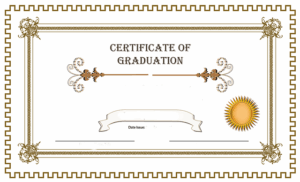Universities worldwide face challenges in translating Enrollment Certificates (ECs) due to varied legal requirements and academic systems. Accurate EC translations are crucial for international student mobility, preventing misinterpretations that could hinder academic journeys. The rise in student mobility has led to a demand for efficient translation tools, with advanced machine translation (MT) using AI offering a revolutionary solution. Automated MT streamlines enrollment processes, ensuring compliance and enhancing experiences for students seeking education abroad while avoiding legal complications.
“Global students’ journeys often begin with navigating complex enrollment certificate requirements. This article explores the process of translating university enrollment certificates, a crucial step for international education. We delve into the global landscape, understanding diverse needs and challenges, from linguistic barriers to legal nuances. By examining technological advancements and best practices, we offer insights on efficient, accurate translations. Ensure compliance, maintain integrity, and facilitate seamless student experiences across borders with our guide on enrolling students worldwide.”
- Understanding Global Enrollment Certificate Requirements
- The Challenges of International Translation Services
- Technological Solutions for Efficient Certificate Translation
- Ensuring Accuracy and Legal Compliance in Translations
Understanding Global Enrollment Certificate Requirements
Universities worldwide operate within diverse legal and regulatory frameworks, each with its own specific requirements for enrollment certificates. These documents are crucial for students seeking to transfer credits, pursue higher education, or apply for jobs internationally. Understanding these global Enrollment Certificate (EC) requirements is essential for both educational institutions and prospective students.
Each country has its own set of standards and regulations governing the format, content, and validation processes for ECs. Factors such as academic qualifications, course descriptions, and assessment methods are meticulously documented to ensure comparability and recognition across borders. By adhering to these international standards, universities facilitate a seamless process for students aiming to continue their education or careers globally.
The Challenges of International Translation Services
The process of translating enrollment certificates for universities worldwide presents unique challenges, especially as educational institutions strive to maintain accuracy and official integrity. One of the primary hurdles is navigating different academic systems and terminology across various countries. What constitutes an “enrollment certificate” can vary significantly from one nation to another, necessitating specialized knowledge of local education structures.
Additionally, maintaining cultural sensitivity and linguistic precision is paramount. Educational documents often contain nuanced language and specific terminology that require expert translation to convey the intended meaning accurately. Misinterpretations or mistranslations could lead to confusion or even legal issues for international students seeking to transfer credits or enroll in programs abroad.
Technological Solutions for Efficient Certificate Translation
With the increasing global mobility of students, the demand for efficient and accurate translation services for enrollment certificates has skyrocketed. Traditional methods often involve manual labor, leading to delays and potential errors. However, technological solutions have emerged to revolutionize this process. Advanced machine translation (MT) tools powered by artificial intelligence (AI) can quickly and precisely translate documents from one language to another, ensuring academic credentials are accurately represented worldwide.
These innovative systems leverage neural networks and vast multilingual datasets to deliver high-quality translations. Furthermore, human review and editing capabilities can be integrated into the process, providing an extra layer of accuracy and cultural sensitivity. By automating this task, universities can streamline their international enrollment processes, offering a seamless experience for students seeking education abroad.
Ensuring Accuracy and Legal Compliance in Translations
Ensuring accuracy and legal compliance is paramount when translating enrollment certificates, especially for universities aiming to attract international students. A mistranslation could lead to significant issues for both the student and the institution. It’s crucial that translation services understand not just the language but also the academic terminology specific to degrees, courses, and university policies.
Legal compliance involves adhering to local regulations regarding educational documentation. This includes knowing the requirements for notarization, authentication, and any additional legal seals or signatures needed for official recognition. Reputable translation companies should have experience navigating these complexities, providing certified translations that meet global standards, thus ensuring international students can seamlessly transfer their credentials and pursue their academic goals.
Global enrollment certificates are a vital tool for international students, facilitating their educational journeys across borders. Understanding and navigating the diverse requirements of these documents is essential. By addressing the challenges of translation services with technological solutions, institutions can ensure efficient processes while maintaining accuracy and legal compliance. This approach streamlines the enrollment process, providing a seamless experience for students seeking higher education worldwide.
